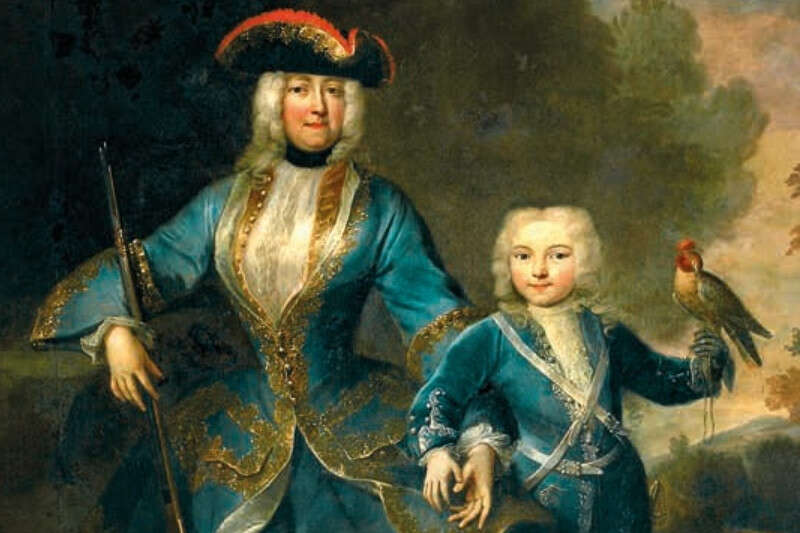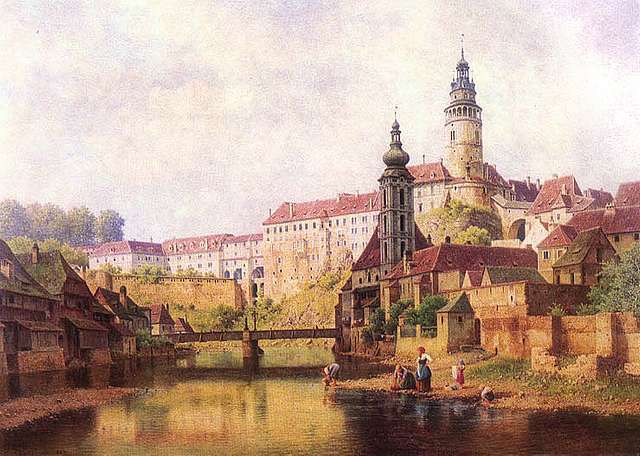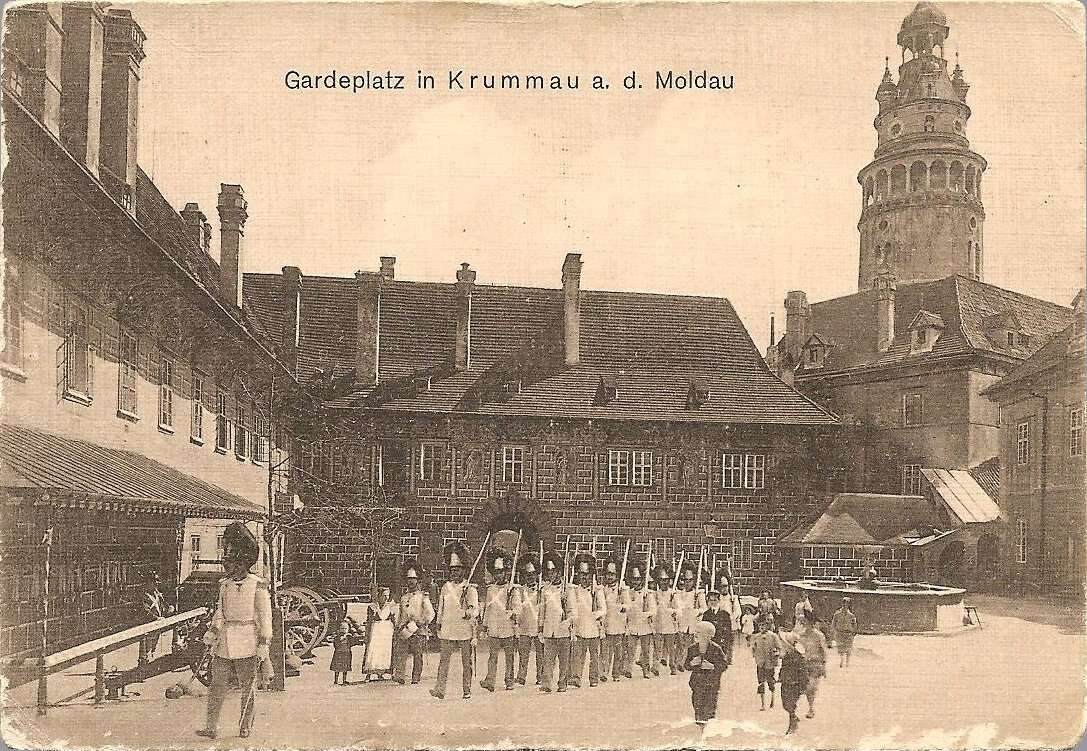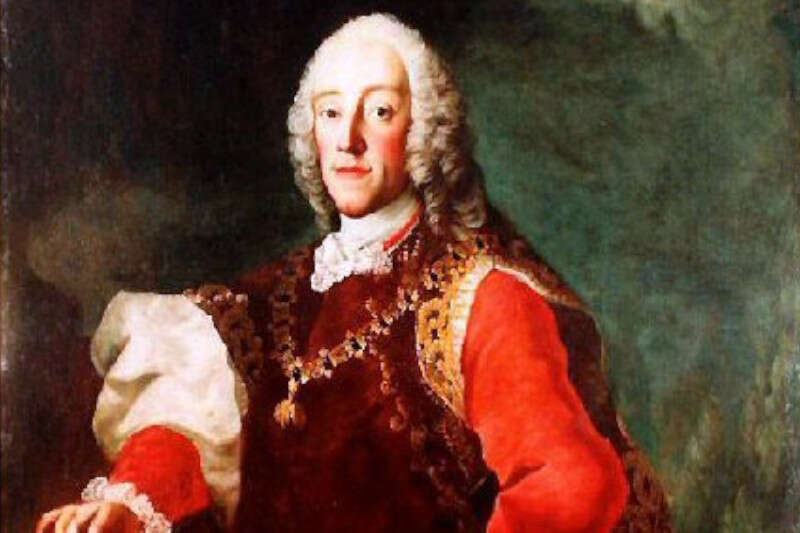Schwarzenbergs
The 1st record of the Schwarzenbergs is from 1172. They're a Bavarian aristocratic family who descended from Seinsheim, a Central Frisian town. They held titles such as princes in the Holy Roman Empire or dukes in the Kingdom of Bohemia. The Schwarzenbergs are one of Europe's most prominent aristocratic families. They have played a significant role in Czech, German and Austrian history.
The Lord who was awarded several castles
The family's founder is thought to be Erkinger I. von Seinsheim. He is the one who purchased the Schwarzenberg estate in the early 15th century and later owned up the Schwarzenberg name. King Sikmund awarded him with several castles and towns in this then unstable territory. As a compensation for his help to suppress the Hussite rebellion in Bohemia. He was even promoted to the status of free lord in 1429. Later on, Erkinger's sons divided the family into 2 branches - Hohenlandsberg and Stefansberg.
The one who captured the Turkish fortress
The most notable member of the second family line was the warlord Adolf. He conquered the Turkish-occupied castle of Raab (today's Györ in Hungary) in the spring of 1598. Emperor Rudolf II. made Adolf a count in 1599, and his coat of arms was expanded by the symbol of a raven pecking out the eye on a Turk's head. Adolf's son - Adam, also served in the military and diplomatic service. Not for the Habsburgs (as most Schwarzenbergs did), but for the Elector of Brandenburg.
The dynasty rose to the peak of power
Thanks to Adam's second-born son, Jan Adolf I, The Schwarzenberg dynasty rose to extraordinary power in the second half of the 17th century (1615-1683). In his youth, Jan Adolf studied in Paris and traveled widely. He started his diplomatic career in 1645. The Třeboň estate was the 1st inherited property that Jan Adolf purchased in Bohemia (1660). He added the manor of Hluboka the next year. Jan Adolf I. paid 385,000 gold coins for it, which was roughly 190,000 thalers at the time.
Jan Adolf was named ‘President of the Imperial Court Council’ by the Emperor in 1670, and he was promoted to the title of a prince the following year. Before Maria Theresa's rule, only first-born sons inherited the title of prince, all the others remained counts.
They controlled a significant part of land in Southern Bohemia
In 1719, Ferdinand's son Adam František acquired the rich duchy of Krumlov from his aunt Maria Arnoštka of Eggenberg. The inherited estates included - Netolice, Volary, Vimperk, Orlík, Zvíkov and Chýnov. Since then, the Schwarzenbergs have owned a significant part of the property in southern Bohemia. Which has sparked a significant growth in their interest in the region.
During the Baroque period, the Schwarzenbergs usually resided in Český Krumlov. After the tragic death of Adam Frantisek, his wife Eleonora Amalie, administered the family estate. Afterwards, her son Josef Adam (1722-1782) took over the administration. Soon afterwards, he married Maria Theresa of Liechtenstein.
Maria Theresa made life difficult with financial reforms
The Schwarzenberg estate was damaged by conflict after the accession of Habsburg Empress - Maria Theresa. In fact, the whole country suffered because The Empress had inherited a heavy debt from her father, Emperor Charles VI. Which she resolved to repay by raising taxes and implementing other financial reforms. As a result, unrest spread across the country and there was an uprising in Bohemia in 1744.
During the war, French soldiers occupied Hluboka for many months and 2 years later (1744) the castle hosted prussian soldiers. Despite the fact that they did not stay in Hluboká for long, Baron Trenck's forces did not leave without causing damage to the castle. After these events, Josef Adam ordered the entire fortification of Hluboka to be destroyed. The goal was that the castle couldn't longer be used for military purposes.
A duke with excellent farming skills
Unlike his ancestors, Josef Adam's son Jan Nepomuk (1742-1789) no longer held any prominent positions at the imperial court. He devoted himself entirely to the estate's administration, beginning the building of a 10 km long water canal. Later on, he transported wood from the Bohemian Forest to Vienna via the Grosse Mühl and the Danube river. He played a crucial role in the establishment of the Commercial Bank, along with other aristocracy, to boost trade and industry in the country. His descendants founded two branches of the family: ‘Hluboka-Krumlov’ and ‘Orlice’.
Modern era of Schwanzerbergs
In 1922, the Czechoslovak state took over 61,000 acres of agricultural and forest land from the Schwarzenberg family. The property of the Hluboká-Krumlov and Orlice branches of the Schwarzenbergs was placed under German rule in 1940. After the end of World War II in 1945, the property of both branches in Austria and Germany was returned to the family.
The family's principal representative is currently Karel Schwarzenberg - the son of Prince Charles VI. Who was adopted in 1962 by JUDr. Jindrich Schwarzenberg, a member of the Hluboka-Krumlov branch of the family. After moving to the Czech Republic in 1990, Karel Schwarzenberg restituted the property of the Orlicka branch. In 2013, he ran for President of the Czech Republic.










